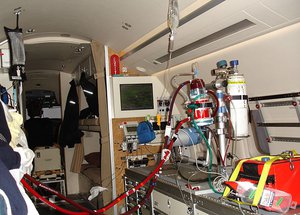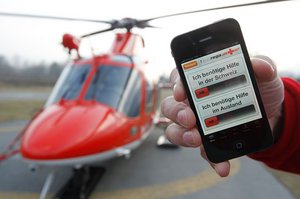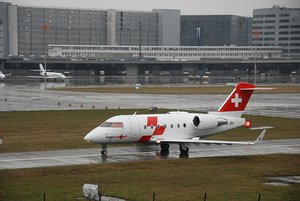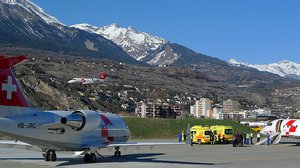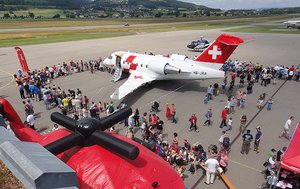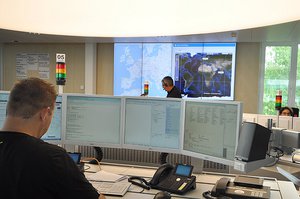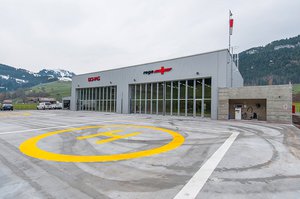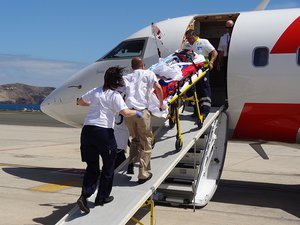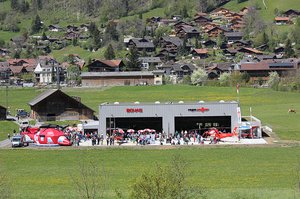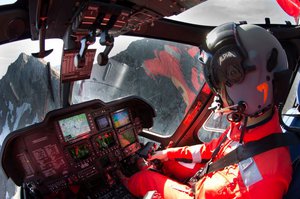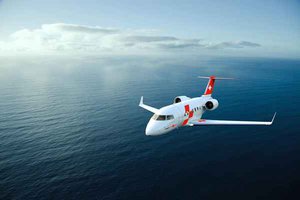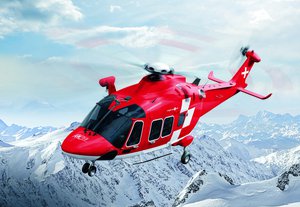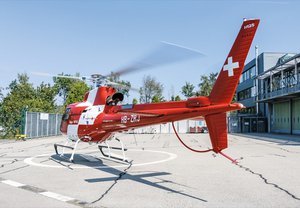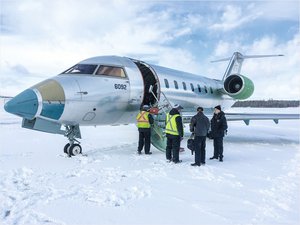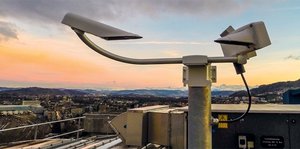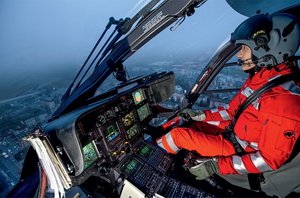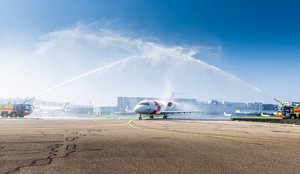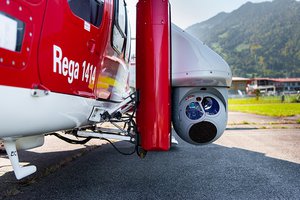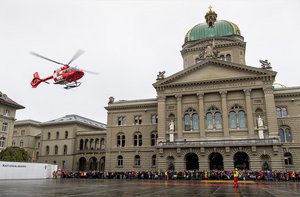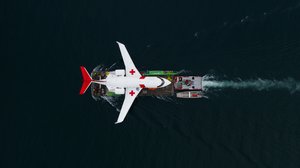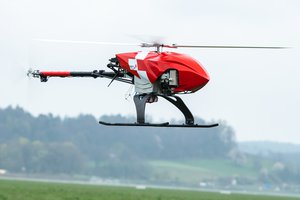26 April: The last of six Rega weather stations is installed and put into operation at the airport in Bressaucourt, Canton Jura. It features, among other things, a ceilometer to measure the altitude of clouds and sensors that can detect the type of precipitation and visibility. The weather station is part of the new countrywide network of measuring stations and webcams that continually deliver current flight weather data to Rega pilots – a prerequisite for flying according to Instrument Flight Rules.
31 August: The Rega fleet welcomes a new member: an Airbus Helicopters H125 helicopter is flown from the works in the south of France to Switzerland. As from spring 2017, «HB-ZRJ» will be principally used to train up-and-coming Rega pilots in performing mountain and external load flights.
30 September: Over the summer months, not only are Rega’s helicopter crews constantly in the air, but more telephone calls than usual are received requesting assistance from abroad. Every day, up to two dozen people are provided with advice by Rega’s medical consultants. Between June and September, more than 500 seriously ill or injured travellers need to be flown home on board a Rega jet or scheduled aircraft.
29 October: Rega hosts the 2nd Central European Air Rescue Symposium in St. Gallen. The event focuses on specialist medical presentations relating to air rescue, such as «Surgical measures at the accident site» or «Blood products and laboratory analyses in the helicopter», as well as the exchange between experts about medical equipment and case studies.
9 December: In Meiringen, Rega signs a contract to purchase six new rescue helicopters of the type, Airbus Helicopters H145, the successor model of the EC 145. As from 2018, these spacious new helicopters will replace the EC 145 fleet currently stationed at Rega’s lowland bases.
14 December: The first of the three new Challenger 650 ambulance jets has fledged. It is flown as a «green aircraft» – with a fully functional cockpit and flyable, but without the cabin interior or livery – from the aircraft works of manufacturer Bombardier in Montreal to Peterborough, near Toronto, where it will be fitted with its new interior.
19 December: Rega transports its first patient on an instrument flight route of the Low Flight Network (LFN) over the Gotthard. This network of instrument flight routes is based on satellite navigation and enables helicopters to fly according to Instrument Flight Rules even when visibility is poor. Since December 2016, the main LFN routes, north-south and east-west, have been certified for rescue missions during the day. Thus Rega is one step closer to realising its vision of all-weather rescue.

